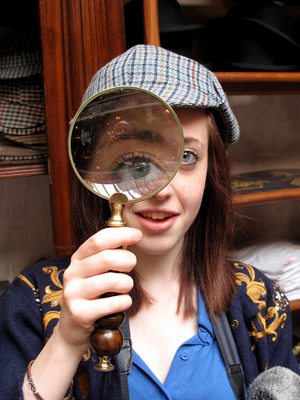Introduction

Discovery is exciting. Every new discovery we make provides us with insights, knowledge, and brand new ways of seeing the world.

Source: Elementary!, canonsnapper, Flickr
We discover things all the time in everyday life. You walk out of school reading a text message from your mom. Suddenly you become aware of excited chatter. You notice a group of students stopped beneath a tree, all looking up. You wonder why they are gathered under the tree and what is causing them to look up. You join the group, look up, and discover a majestic, white peacock sitting on one of the limbs. Putting bits of information together to discover something new is not limited to everyday experiences. The same thing happens when reading works of literature. This is called making an inference.
While reading literature, you can discover, or infer, the author’s message by connecting bits of information from within the text. When we look for details that give us critical information, we are making an inference. In the text of a play, for example, a playwright provides bits of information about the plot, setting, and characters through dialogue and stage directions.
A complex inference is an inference where information is subtle and not always easily connected. These inferences may require finding clues to come up with meaning. As with many undertakings in life, the greater the effort, the greater the reward. Grab your pretend magnifying glass as you set out on a quest of exploration and discovery.
In this lesson, you will learn how to make complex inferences about a play and to use evidence from the text to support your understanding.